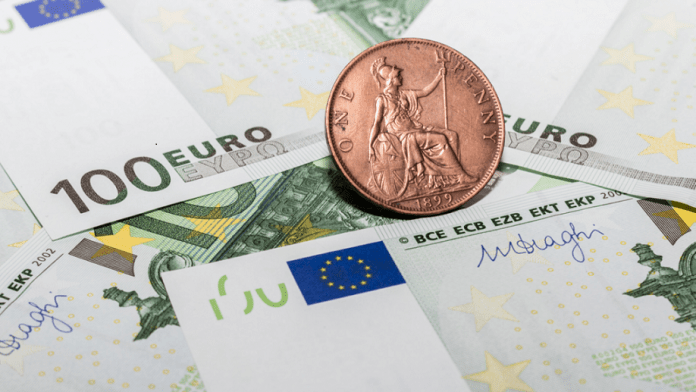After rising in early trade, the euro US dollar exchange rate trended lower as the session progressed. The pair rallied to a high of US$1.1068 before starting its descent. The pair is on track to book a loss across the week, snapping a two-week winning streak.
Encouraging data from Germany helped the euro advance in early trade on Friday. German inflation at factory level, as measured by the producer price index (ppi), unexpectedly increased month on month in August. PPI increased 0.5%, well ahead of the -0.2% decline analysts had forecast. PPI can be a useful eco stat to look at because economists consider it to be a future indicator of consumer inflation. If factory level inflation increases, consumer level inflation could increase later down the line. Increased inflationary pressure means a central bank is less likely to cut interest rates.
| Why do interest rate cuts drag on a currency’s value? |
| Interest rates are key to understanding exchange rate movements. Those who have large sums of money to invest want the highest return on their investments. Lower interest rate environments tend to offer lower yields. So, if the interest rate or at least the interest rate expectation of a country is relatively lower compared to another, then foreign investors look to pull their capital out and invest elsewhere. Large corporations and investors sell out of local currency to invest elsewhere. More local currency is available as the demand of that currency declines, dragging the value lower. |
The euro has since edged lower, despite the announcement of a multi- billion-euro package to get the country’s environmental policies back on track. The value of this package at €55 billion is approximately the same as the stimulus package following the 2009 financial crisis.
In addition to addressing environmental concerns, the deal could increase spending at a time when the German economy is in need of a boost. The prospect of additionally spending in Germany would usually boost the value of the euro, as it creates inflationary pressures.
Dollar Strengthens On Mixed Trade Talk Reports
The dollar started the session on the back foot, however it has since advanced. After a busy week of data and central bank announcements, the economic calendar is looking a lot quieter today.
Focus is now turning to US — China trade talks which have resumed for the first time in two months. However, dollar investors’ response has been mixed so far. Whilst optimism of a breakthrough in talks is boosting risk appetite and therefore weighing on the value of the dollar, China state media has also played down the potential of a deal. This has served to reduced risk appetite and has lifted the dollar. The dollar is the reserve currency of the world, which gives it a safe haven status. In times of increased risk appetite demand for the dollar decreases and vice versa.
Any further headlines indicating that progress is slow in trade talks between the US and China could boost the dollar further.
| What do these figures mean? |
| When measuring the value of a pair of currencies, one set equals 1 unit and the other shows the current equivalent. As the market moves, the amount will vary from minute to minute.
For example, it could be written: 1 EUR = 1.12829 USD Here, €1 is equivalent to approximately $1.13. This specifically measures the euro’s worth against the dollar. If the U.S. dollar amount increases in this pairing, it’s positive for the euro. Or, if you were looking at it the other way around: 1 USD = 0.88789 EUR In this example, $1 is equivalent to approximately €0.89. This measures the U.S. dollar’s worth versus the euro. If the euro number gets larger, it’s good news for the dollar. |





